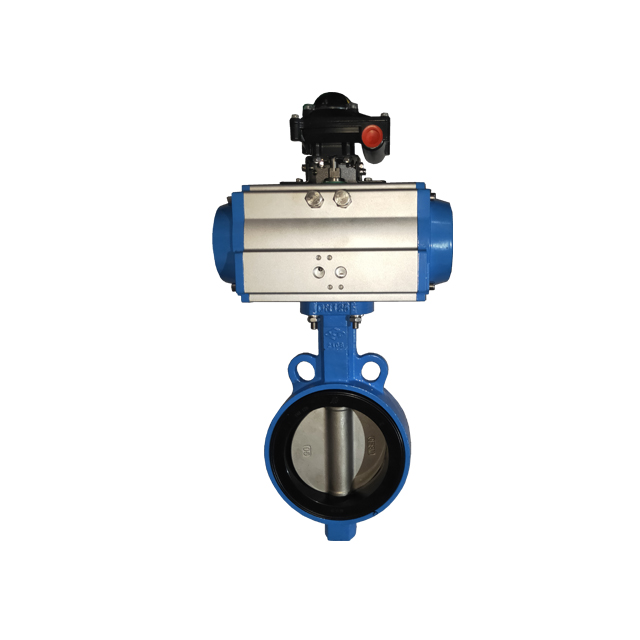Perkenalan
Katup kupu-kupu aktutor pneumatik memainkan peran penting dalam industri yang memerlukan kontrol aliran fluida yang efisien. Katup ini memberikan pengaturan aliran cairan atau gas yang andal dan tepat melalui pipa. Dalam panduan utama ini, kita akan menjelajahi katup kupu-kupu aktuator pneumatik, termasuk definisi, jenis, prinsip kerja, dan fitur utamanya. Informasi ini akan membantu Anda mendapatkan pemahaman yang lebih baik tentang produk ini dan aplikasinya.
Katup kupu-kupu aktuator pneumatik adalah katup yang memanfaatkan aktuator pneumatik untuk mengontrol posisi cakram atau pelat, yang disebut kupu-kupu, di dalam badan katup. Katup ini dirancang untuk mengontrol aliran fluida dengan memutar cakram untuk membuka, menutup, atau mengatur saluran aliran. Mereka datang dalam berbagai jenis, termasuk:
Katup kupu-kupu aktuator pneumatik menawarkan beberapa fitur yang menjadikannya menguntungkan dalam aplikasi kontrol fluida. Beberapa fitur utama meliputi:
Katup kupu-kupu aktuator pneumatik memberikan kontrol yang presisi terhadap aliran fluida, memungkinkan penyesuaian dan modulasi laju aliran yang akurat. Hal ini membuatnya cocok untuk aplikasi yang memerlukan pengaturan aliran yang tepat.
Katup-katup ini memiliki waktu respons yang cepat, memungkinkan pembukaan dan penutupan katup dengan cepat, yang penting dalam situasi yang memerlukan kontrol aliran segera.
Katup kupu-kupu aktuator pneumatik memiliki desain yang ringkas dan ringan, sehingga mudah dipasang dan cocok untuk aplikasi dengan keterbatasan ruang.
Katup kupu-kupu dikenal karena kinerja penyegelannya yang andal, memastikan penutupan yang rapat dan mencegah kebocoran.
Katup kupu-kupu aktuator pneumatik dapat diterapkan di berbagai industri, termasuk pengolahan air, HVAC, pemrosesan kimia, makanan dan minuman, dan banyak lagi. Mereka biasanya digunakan dalam sistem yang memerlukan kontrol aliran yang tepat, seperti mengatur laju aliran, mengisolasi bagian pipa, atau mengalihkan aliran.
